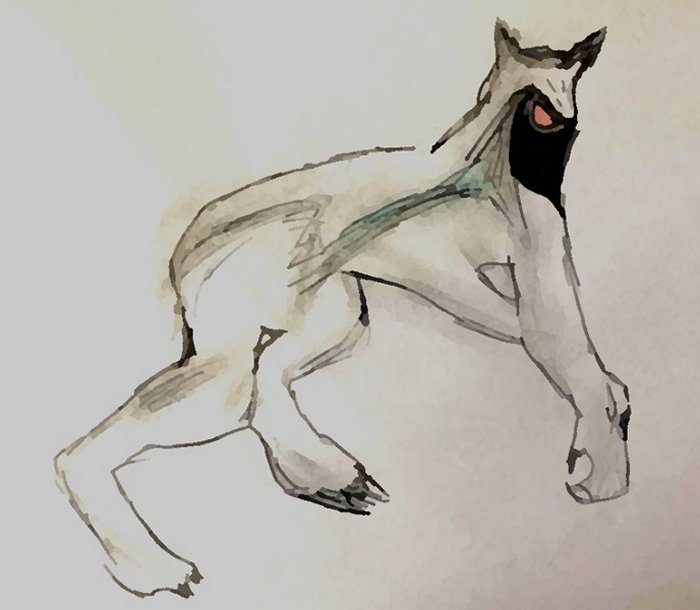Feared Skinwalker – Shapeshifter That Uses Mind Control To Hurt Victims In Native American Mythology
Ellen Lloyd - AncientPages.com - For the Navajo and other tribes of the Southwest, the tales of skinwalkers are not only legends. Navajo people are reluctant to reveal skin-walker lore to non-Navajos. Many are convinced these evil creatures are real.
Native Americans' belief in skinwalkers has survived until today and remains especially strong among the Navajo and Quileute Indians.
The Wendigo is not the only evil shapeshifter mentioned in Native American mythology. Another fearsome creature is the skinwalker.
Left: Skinwalkers are feared among Native Americans. Navajo Yebichai dancers. Credit: Eduard S. Curtis. USA, 1900, Wellcome Trust - Public Domain
Skinwalkers are regarded as very dangerous. They are cursed, evil humans who use magic to change shape. Basically, it's a creature that is created via supernatural rituals.
Although the being resembles an animal, it is essentially a spirit-based doppelganger of a shaman. The skinwalker is sometimes described as evil who, using supernatural powers, transforms into an animal, such as a coyote, owl, fox, wolf, or crow.
There are countless legends about the skinwalkers, who are undoubtedly one of the most feared creatures among Native Americans.
"In the American Southwest, the Navajo, Hopi, Utes, and other tribes each have their own version of the skinwalker story, but basically, they boil down to the same thing—a malevolent witch capable of being transformed into a wolf, coyote, bear, bird, or any other animal.
The witch might wear the hide or skin of the animal identity it wants to assume, and when the transformation is complete, the human witch inherits the speed, strength, or cunning of the animal whose shape it has taken," Colm A. Kelleher writes on the book Hunt for the Skinwalker,
The Navajo regard skinwalkers as evil and are convinced these beings exist. The Indians fear the skinwalkers so much that they refuse to discuss them publicly for fear of retribution. It is believed that skinwalkers move freely about the tribe. They cannot be noticed because and go their human shape is often devoid of any markings or signals that would expose them.
One of the reasons the skinwalkers are considered so frightening is because they can kill a person with just one look. It' 's possible to recognize a skinwalker by looking into the creature's eyes, which give off a strange luminescence, but as soon as you confront their gaze, you die. In Navajo mythology, skinwalkers, also known as Yenaldooshi are shamans and necromancers who spread sickness by means of a powder made from corpses.
Artistic impression of what a Skinwalker may look like. Credit: Jakubdrastich2 - CC BY-SA 4.0
In the book The Supernatural Book of Monsters, Spirits, Demons, and Ghouls, author Alex Irvine explains that "the yenaldooshi gains supernatural power by violating a serious cultural taboo, in this case murdering a relative."
Skinwalkers are believed to be very violent and physically strong. They can attack not only humans but also vehicles, and they can run sixty miles per hour.
"The Navajo skinwalkers use mind control to make their victims do things to hurt themselves and even end their lives," writes Doug Hickman, a New Mexico educator. "The skinwalker is a very powerful witch. [It] can run faster than a car and can jump mesa cliffs without any effort at all," Kelleher explains.
According to the Navajo, a skinwalker can die, but these evil beings are very difficult to catch. One can track down a skinwalker and uncover its true identity, but killing the creature is not easy. It can be done, though, by pronouncing the evil skinwalker's name in full. When it happens, the skinwalker can become sick and eventually die.
Written by Ellen Lloyd – AncientPages.com
Updated on November 18, 2023
Copyright © AncientPages.com All rights reserved. This material may not be published, broadcast, rewritten or redistributed in whole or part without the express written permission of AncientPages.com
Expand for referencesMore From Ancient Pages
-
 Mystery Of Giant Gogmagog’s Hidden Treasure Beneath Castell Dinas Bran
Featured Stories | Oct 15, 2021
Mystery Of Giant Gogmagog’s Hidden Treasure Beneath Castell Dinas Bran
Featured Stories | Oct 15, 2021 -
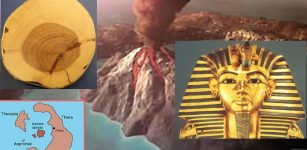 Radiocarbon Dating Method Needs Adjustments – Researchers Say
Archaeology | Apr 1, 2020
Radiocarbon Dating Method Needs Adjustments – Researchers Say
Archaeology | Apr 1, 2020 -
 Huge Ancient Ceramic Workshop With Hundreds Of Stunning Artifacts Solves An Archaeological Mystery In Israel
Archaeology | Dec 14, 2020
Huge Ancient Ceramic Workshop With Hundreds Of Stunning Artifacts Solves An Archaeological Mystery In Israel
Archaeology | Dec 14, 2020 -
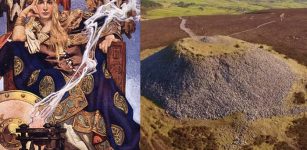 Is Legendary Celtic Warrior Queen Medb Buried In An Ancient Mound On The Top Of Knocknarea?
Celtic Mythology | Jan 24, 2021
Is Legendary Celtic Warrior Queen Medb Buried In An Ancient Mound On The Top Of Knocknarea?
Celtic Mythology | Jan 24, 2021 -
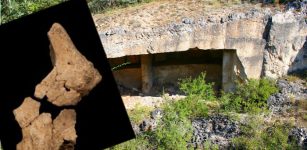 Major Breakthrough: 1.4-Million-Year-Old Bones Discovered In Spain Rewrite History Of Human Evolution In Europe
Archaeology | Sep 29, 2022
Major Breakthrough: 1.4-Million-Year-Old Bones Discovered In Spain Rewrite History Of Human Evolution In Europe
Archaeology | Sep 29, 2022 -
 Rare Upper Paleolithic Human Remains Discovered In The Iberian Peninsula
Archaeology | Aug 12, 2021
Rare Upper Paleolithic Human Remains Discovered In The Iberian Peninsula
Archaeology | Aug 12, 2021 -
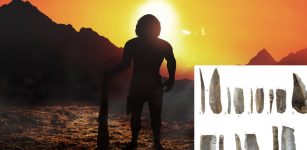 Tool Patterns Reveal What Caused The Neanderthals’ Extinction In The Iberian Peninsula
Archaeology | Mar 30, 2022
Tool Patterns Reveal What Caused The Neanderthals’ Extinction In The Iberian Peninsula
Archaeology | Mar 30, 2022 -
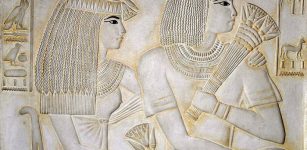 Mystery Of Merit Ptah And The Unknown Identity Of Peseshet Who History Forgot
Archaeology | Jan 8, 2020
Mystery Of Merit Ptah And The Unknown Identity Of Peseshet Who History Forgot
Archaeology | Jan 8, 2020 -
 Biblical Prophet Jeremiah Whose Prophecies Disappointed People
Biblical Mysteries | Jan 30, 2019
Biblical Prophet Jeremiah Whose Prophecies Disappointed People
Biblical Mysteries | Jan 30, 2019 -
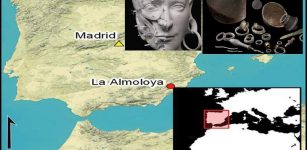 Disappearance Of The El Argar Civilization – Why Has No One Lived In The La Almoloya Region Again?
Civilizations | May 10, 2022
Disappearance Of The El Argar Civilization – Why Has No One Lived In The La Almoloya Region Again?
Civilizations | May 10, 2022 -
 Sacred Number Six And Its Symbolic Significance In Ancient Cultures
Ancient Symbols | Dec 27, 2017
Sacred Number Six And Its Symbolic Significance In Ancient Cultures
Ancient Symbols | Dec 27, 2017 -
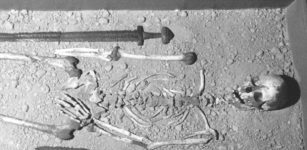 Huge Viking Burial Discovered Beneath Streets Of Dublin
Archaeology | Aug 6, 2014
Huge Viking Burial Discovered Beneath Streets Of Dublin
Archaeology | Aug 6, 2014 -
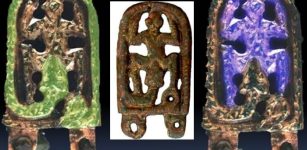 Unique Medieval Bronze Buckle Of A Snake Devouring A Frog-Like Creature Found In Brno, Czech Republic
Archaeology | Dec 13, 2023
Unique Medieval Bronze Buckle Of A Snake Devouring A Frog-Like Creature Found In Brno, Czech Republic
Archaeology | Dec 13, 2023 -
 Neanderthals Painted Andalusia’s Cueva de Ardales – New Study Confirms Their Cave Art
Archaeology | Aug 3, 2021
Neanderthals Painted Andalusia’s Cueva de Ardales – New Study Confirms Their Cave Art
Archaeology | Aug 3, 2021 -
 Science Fiction Was Around In Medieval Times – Here’s What It Looked Like
Featured Stories | Sep 18, 2018
Science Fiction Was Around In Medieval Times – Here’s What It Looked Like
Featured Stories | Sep 18, 2018 -
 Munkholmen: Island With Intriguing Yet Dark And Scary History
Featured Stories | Aug 25, 2023
Munkholmen: Island With Intriguing Yet Dark And Scary History
Featured Stories | Aug 25, 2023 -
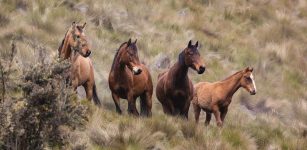 Ancient Knowledge About Horse Taming Is Rewriting Our Picture Of The Past
Archaeology | Jan 27, 2022
Ancient Knowledge About Horse Taming Is Rewriting Our Picture Of The Past
Archaeology | Jan 27, 2022 -
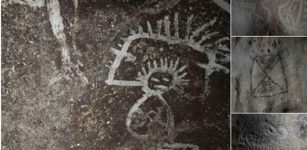 Secrets Of Mona’s Caves: Rock Art Reveals Ancient People Were Ahead Of Their Time Long Before The Arrival Of Columbus
Archaeology | Nov 4, 2017
Secrets Of Mona’s Caves: Rock Art Reveals Ancient People Were Ahead Of Their Time Long Before The Arrival Of Columbus
Archaeology | Nov 4, 2017 -
 Mystery Of The Roman Tile Kiln At Brandiers Farm Solved!
Archaeology | Aug 18, 2023
Mystery Of The Roman Tile Kiln At Brandiers Farm Solved!
Archaeology | Aug 18, 2023 -
 Rare Ancient Paycheck Of A Roman Legionary Soldier Found At Masada
Archaeology | Feb 16, 2023
Rare Ancient Paycheck Of A Roman Legionary Soldier Found At Masada
Archaeology | Feb 16, 2023


